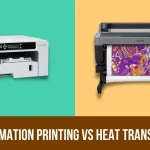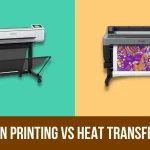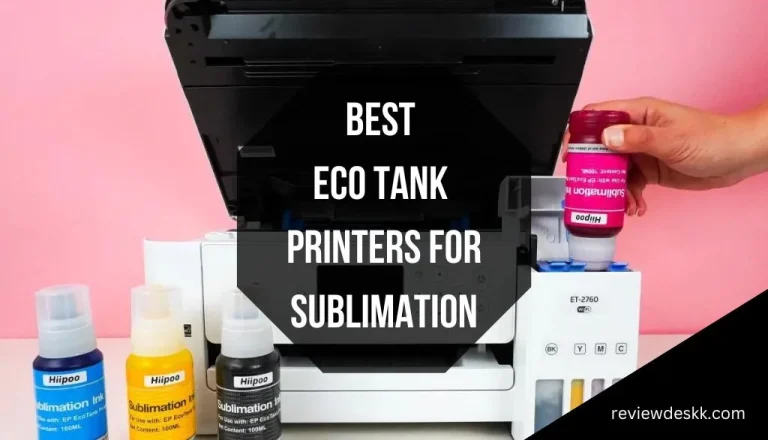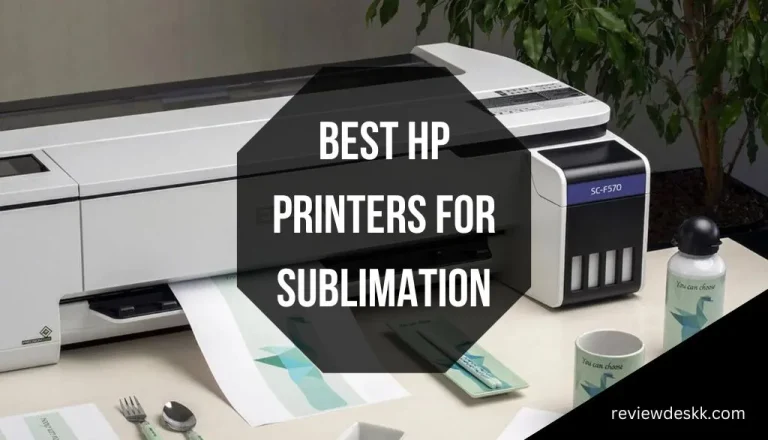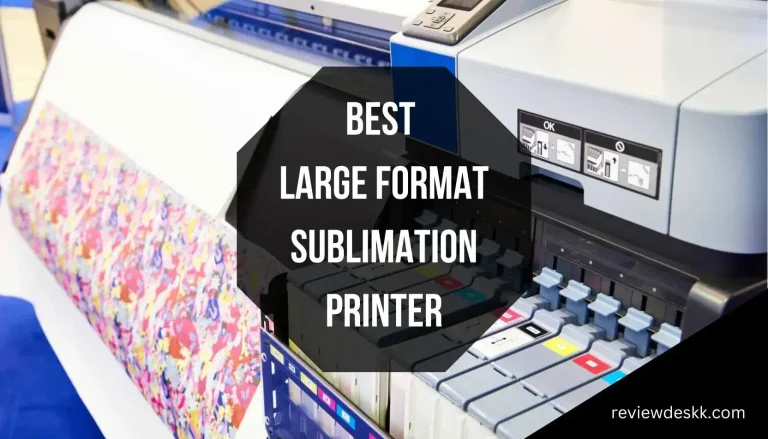How to Adjust Heat and Pressure for Sublimation Printing?
Sublimation printing is a well-demanding product in the market nowadays. However, you are using sublimation printing to check such as t-shirts mugs, or many other products. It is very important to know how to adjust the heat and pressure for sublimation printing.
In this article, I will explain how to adjust heat and pressure for sublimation printing, products and their special adjustments to check the working of the sublimation printer. So just read till the end.
Sublimation Heat Setting:
All your equipment is ready the printer the ink the best heat press for sublimation or convection oven, and the sublimation paper. Are those results guaranteed with sublimation printing? The answer is no. Our substrate had the same dull-looking output problem.
This failure was not caused by the printer settings, paper, or sublimation ink to knowing How to adjust heat and pressure for sublimation printing because the print output had already been tweaked and refined.
When you use the correct temperature and pressure settings even the sharpest color design on paper will transfer to the target material such as fabric ceramic metal etc.
What is the correct Sublimation Heat Press and Temperature Setting?
| Material | Temperature | Time | Pressure |
| Polyester | 400° F | 35-40 seconds | 40 psi |
| Ceramic | 350-400°F | 150-210 seconds | 40 psi |
| Metal | 400° F | 60-80 seconds | 40 psi |
| Hardwood | 360-400°F | 40-80 seconds | 40 psi |
| MDF(fibreboard) | 400°F | 80-90 seconds | 40 psi |
| Plywood | 400° F | 60-70 seconds | 40 psi |
| Fiber-reinforced plastic | 380-400°F | 60-75 seconds | 40 psi |
No ‘one size fits all’ approach to sublimation heat press settings exists. The hard way taught us a valuable lesson, but we won’t repeat it for you.
In most cases, your seller will share the correct settings for the material if you purchase sublimation-ready items like fabrics and ceramic mugs.
The following list of the most common sublimation materials and their settings to know How to adjust heat and pressure for sublimation printing.
Polyester:
Fibers in polyester bond well with sublimation ink making it an excellent substrate for sublimation. Additionally, printed apparel is a vast market for sublimation enthusiasts.
For polymers, a heat press setting of 400F for 35 to 40 seconds at a medium pressure of 40 psi is recommended.
Ceramic:
In addition to ceramic sublimation, a special heat press is required to accommodate the product’s design. When setting up the heat press, set the temperature to 350-400°F and pressure to 40 psi for optimal results. Approximately 150-210 seconds are required, a bit longer than polyester.
Metal:
Compared to other sublimation materials, metal sublimation looks shinner and retains details better. Permanently remove the plastic coating from metal surfaces before sublimating. You need to heat your heat press to 400F and press for 60 to 80 seconds at medium pressure of 40 psi.
Hardboard and MDF:
The pressing time for hardboard at a temperature range of 360-400 is 40-80 seconds, unlike metal. Pressure should be maintained at a medium level of 40 psi.
The design should be pressed for 80-90 seconds at 400 F temperature and medium pressure on MDF.
Plywood:
Sublimating plywood requires you to remove the plastic coating and clean the surface before using a heat press. For 60-70 seconds, press the design at medium pressure, temperature 100%, polyester temp, settings, cotton, Celsius, 50/50, pre-temperature on a press heated to 400°F.
Fiberglass Reinforced Plastic:
The process of FRP takes a little longer than that of MDF. A medium pressure of 380-400F must be applied to the design for 60-75 seconds.
Here are some tips for adjusting the heat and pressure for sublimation printing:
- You can adjust the settings once you have started with the recommended setting. The best way to find the right settings is to start with the recommended settings and then adjust them up or down until they achieve the results you desire.
- Make sure your heat press has a digital display. Heat presses can be monitored more easily this way.
- The substrate must be pre-pressed. Sublimation can be affected by wrinkles and moisture on the substrate.
- Transfer paper of good quality should be used. Ink will sublimate evenly and smoothly with a good quality transfer paper.
- Take your time. Finding the right settings for your project may require some trial and error. If you don’t see results right away don’t get discouraged.
Frequently Asked Questions:
In general How to adjust heat and pressure for sublimation printing? the lower the pressure the lower the sublimation temperature for any solid based on its triple point. Sublimation requires temperature and pressure below the triple point of the desired substance.
One hand pressure; closing the press with one hand for example t shirts. For a medium-pressure press, one hand is required with the assistance of the other hand to close the press.
The press must be closed with both hands it’s under heavy pressure. Two plus some shoulder strength equals very heavy pressure.
A heat press that uses automatic pressure usually has a pressure between 25 to 30 psi. The upper platen of a manual heat press will be easy to close with just one hand if you use light pressure. When using an automatic heat press, medium pressure is usually between 32 to 38 psi.
Most air-assisted machines consider 60psi heavy pressure. There are some manual machines with a nominal pressure readout of 0-9. Pressures 0 and 9 represent light and heavy pressures respectively.
The product you are sublimating will be heated evenly using medium pressure. Just tight enough to hug your items. It is often the case that uneven spots will appear on the surface of your products if your pressure is too high.
Final Verdict:
If you want to know How to adjust heat and pressure for sublimation printing? Sublimation printing requires a medium pressure, which is approximately 35-50 psi, and a temperature of 375°F to 400°F. Substantial differences may exist between substrates, however.
If you are not getting the results you want, you can adjust the settings up or down until you are satisfied with them. Sublimation materials and heat presses can also be purchased from the manufacturer.





